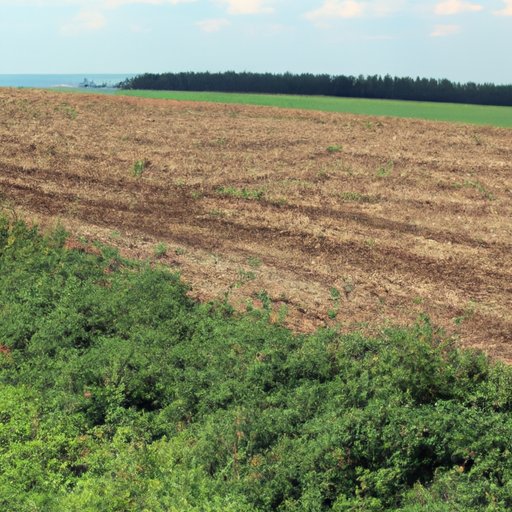Introduction
Wind erosion is a naturally occurring process that can lead to devastating effects on soil health. The loss of topsoil can have detrimental effects on agricultural production and natural ecosystems alike, as well as contribute to air pollution and other issues. Preventing wind erosion is essential for preserving our soil and protecting the environment. In this article, we will explore some of the best methods to prevent wind erosion and promote sustainable land use practices.
Definition and Causes of Wind Erosion
Wind erosion is the process by which soil particles are moved from their original location by the force of wind. The primary factors that contribute to wind erosion are wind velocity, soil texture, and moisture content. High winds, light-textured soil, and low moisture content increase the likelihood of wind erosion occurring.
Vegetation Cover
Having vegetative cover is an effective method for preventing wind erosion. Vegetative cover reduces wind velocity, protects the soil surface from direct exposure to wind, and helps to retain soil moisture. Plant species such as grasses, shrubs, and trees are effective at preventing wind erosion, with the type of vegetation chosen depending on the specific soil and climatic conditions. Perennial plants, such as grasses and shrubs, are often preferred due to their deep root system and year-round coverage, while annual plants such as cover crops can be used to provide short-term protection between cash crops.
Conservation Tillage
Conservation tillage practices minimize soil disturbance and help to maintain soil structure. They can also help to reduce the potential for wind erosion by leaving a protective residue layer on the soil surface. Examples of conservation tillage practices include no-till, minimum tillage, and reduced tillage. These methods promote sustainable agricultural practices that can help to prevent wind erosion, while also conserving soil moisture and improving crop yields.
Windbreaks
Windbreaks are physical barriers that are designed to reduce wind velocity and prevent soil erosion. They are often constructed using trees, shrubs, or earthen berms, and can be placed along field edges, roadways, or property boundaries. Effective windbreak design considers factors such as height, density, and orientation, and requires careful planning and management. Windbreaks offer additional benefits, such as improving habitats for wildlife, reducing noise pollution, and providing visual and aesthetic benefits.
Soil Compaction
Soil compaction is an important factor in promoting soil stability and preventing wind erosion. Compacted soil is less susceptible to being moved by wind, as well as being more resistant to water erosion. Techniques such as cover cropping, crop rotation, and reducing tillage can help to promote soil compaction, while also promoting soil health and reducing the need for chemical inputs.
Mulching
Mulching is another effective method of preventing wind erosion. Mulch helps to retain soil moisture, protects against direct exposure to wind, and minimizes soil temperature fluctuations. Materials such as straw, hay, wood chips, and leaves can be used for mulching, with the specific material chosen depending on the intended use and local availability. Effective mulching techniques involve spreading the material evenly over the soil surface while avoiding placement in high wind-prone areas.
Best Practices
The best practices for preventing wind erosion involve a combination of techniques and management practices, tailored to the specific soil and climatic conditions of the area. Key takeaways from this article include promoting vegetative cover, using conservation tillage practices, incorporating windbreaks, promoting soil compaction, and mulching. By implementing these practices, farmers and landowners can improve soil health, promote sustainable land use, and prevent wind erosion from occurring.
Conclusion
Preventing wind erosion is essential for preserving soil health and protecting the environment. By implementing effective techniques such as vegetation cover, conservation tillage, windbreaks, soil compaction, and mulching, we can promote sustainable land use and safeguard the soil for future generations. We encourage landowners, farmers, and policymakers to take action and incorporate these best practices into their management strategies, to ensure a healthy and productive environment for all.
